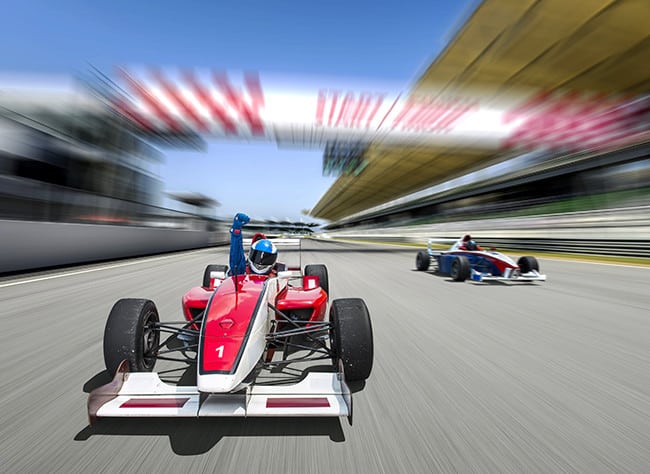By Franck Boynton, VP and CTO
We were tasked to help with the development of a video game that could actually follow the movements of Formula One race cars in real time during actual races. The goal was to give the gamer the ability to access metrics of an actual F1 car during a live race. The gamer would not be able to control the race cars, but they would be able to experience other things in real time while the race was happening. By combining the metrics from the F1 car with 3D models of the cars and the track, the gamer would be able to access metrics such as speed, braking, G-forces, acceleration, engine data and more from the cars in the race, while the race was taking place live, and potentially look out the cockpit to see the race around them.
This was a multi-staged project that started in the desert of California for proof of concept, then over to the U.K. for meetings with different engineers, and finally back to the U.S. to the Indianapolis Motor Speedway to survey the Speedway track and overlay the LiDAR mapping data.

During the proof of concept, we put 1 cm. accuracy post-processed GPS receivers on Formula Atlantic cars. These cars acted as stand-ins for the F1 cars. These cars provided a very high vibration, hostile environment, but our equipment withstood the environmental rigors, providing data to the 3D models to show the cars moving in relation to each other.
We wanted to test how accurate our GPS positioning was. Since Formula Atlantic cars are open wheel, we interlocked the wheels of the cars and pushed them down the track with the motors off. This exercise was done to show the accuracy of the system. When the wheels are interlocked the cars were inches from each other. We needed to show the cars would be very close while not appearing to hit each other in the simulation. When we replayed the GPS data through the software, we saw the test cars (with the interlocked wheels) imposed on the track and saw the cars were properly positioned relative to one another. We were able to successfully provide actual real world, precise positioning information to be incorporated into the video game.
Unfortunately, in the end because of various rights and regulations, the game was never brought to market. Nevertheless, we proved that cars fitted with high precision GPS in a race could have the ability to send its metrics to a video game console in real time immersing the gamer in the race car cockpit for a "real" user experience.